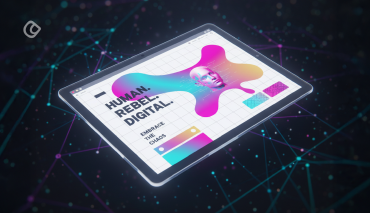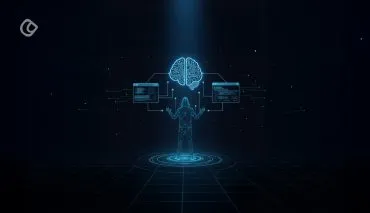Have you ever thought about real-world things in a way that distinguishes them from any manuscripts or documents, which contains their description? Yes, most of us have at least once in our lifetime thought resourcing before representing.
We are going to take you through a state where mobile, content and objects fall in the first place. Let us take some time out and go through this kind of a process.
Something called as object-oriented UX was introduced a while ago. Though, most of our readers have heard of the concept, some clearly know what it is, but, we thought that it would be further helpful for those who have actually little or no information about what the hype is all about.
Even though we’re a full fledged UX agency, we have structured our analysis and research in such a way that anyone would really find something to take away upon reading through.
Let us start with what exactly is object-oriented UX.
As we already discussed, the concept revolves around the idea mobile-first, content-first and object-first. This would differ from the usual conceptualization that we have been following all this time. Procedural-action design would be now pushed back by object design and we would be visualizing the whole process across the lines of real-world systems from the perspective of user’s mind and how they would model it; digitalization or virtual world has no role here. (Check out, filtering, comparison or search will be chucked out.)
Objects will be defined after which the action design will take place, which differs from the traditional process where action design happens moving through flows, interactions and features, and later object definition.
Why do experts recommend this?
- Time saving: Component reuse is a highlight, as it will help in saving the developer’s time.
- User’s intuition is taken into consideration, which means that a seamless experience will be offered thereby improving the overall user experience (UX).
- This will further enhance your product as the maintenance is easier and you can update it by adding objects in future. Futuristic enhancement can happen without affecting any of the existing processes and each time, you can add an object or improvise it based on user’s feedback.
It is, of course, not easy to think of mobile first though we have been asked every time to keep it in mind when moving ahead with our design process, specifically after responsiveness became an important parameter for Google to decide a site’s ranking position. Now, we have reached a point where we need to think of this even when designing for desktop-only apps. It could sound a bit clichéd as no businesses want a desktop-only app. But, this clarifies the irony of the present situation that we are moving through and how important it is mobile and how we need to think of it first.
It could be a forced prioritization when all your life, you have been designing for desktops and then for other devices. When mobile first succeeds, layout comes at a later stage. Within this process, we will be starting with a single column design, usually referred to as list. Next you have no other choice but to prioritize content and functionality on the basis of their sequential ranking. Now, the advantage of this kind of a concept is that it merges well with the content-first idea that comes with Object-Oriented UX.
We are moving away from the concept of canvas-in design toward a content-out design, which are poles apart from one another. Prioritizing the first features on the basis of their importance is vital here. This could take you to a point where you would be having a real content copy unlike before. Think of it in terms of huge volumes of content or instructional copies that has to be analysed, prioritized, organized and updated long before you start the design process.
We can predict your thought now. A lot of questions needs answers. We can answer that too. Yes, what about a site – which is something like a live news channel, where content changes every minute. Such sites that are instantiated by objects, including products, campaigns, news articles or donations, it is in fact not easy to think of content first or organizing instructional copies is meaningless. But, we can prioritize actual copies – think of objects first.
This is where Object-Oriented UX (OOUX) happens. We will be starting with object design as discussed earlier way before you introduce procedural action design. Think of the system from the perspective of the real-world objects that revolve around in the user’s mental model, such as products, locations or tutorials, and here there is no place for digital-world actions, such as check out, filter, compare or search. The traditional process where the process moves through flows, interactions and processes driven by action-first will be replaced by defining objects in the first place. This is purely what OOUX is.
Let us find out how OOUX is important.
For that, we would have to travel back in time and think from the perspective of our back-end developers. It all started way back in the 80’s when the software-related community began migrating toward object-oriented languages from procedural ones. The reason for this transition was the numerous benefits provided by object-oriented language, which includes code reuse, data encapsulation and software maintenance with ease. Now we are familiar with the advantages as we have been using these object-oriented programming languages (C#, C++, Python, Ruby or Java) for designing our dreams.
How the process works?
The developers start with their process by mapping. They map the objects that comprise the problem realm (nothing new to UX designers as this is the approach that they follow from the scratch). They construe your objects by reverse engineering the design firstly; this happens after analysing the wireframes or prototypes. Thinking in terms of each object communicate with another object. Will one object be able to create many other similar objects? The parameters that needs to be incorporated into each of these objects – also analysing whether this class of objects can inherit from the associated class of objects.
But, when it comes to web designs, it differs; in that, though we think on the object-oriented front, the design process is procedure oriented as it starts from the drill-down pyramid or takes a linear task flow approach. Of course, there is yet another option too. Experts argue that we can still place both the front-end and back-end designs to follow the object-oriented approach, which installs a consistency throughout the software development.
Object orientedness opens up to unveil structural connection among the objects of design, implementation and analysis. This definition of the objects will provide a demonstration of the user’s mental model framework that would further help in ensuring that there is an efficient communication in the team. This shared form of language not only provides a consistency within the team, but also provide:
- Improvization of user experience through mental model synchronization
- Minimizing unexpected complexities and imbibing in simplicity
- Enhance, update and maintain your products – as the objects can be iterated without affecting any other existing system functionalities
- Using portable and independent objects, provision to build enhanced APIs
- Nested linking and well-strategized content will earn you greater SEO rankings
OOUX is well-known for the contextual navigation, which is most important in any design and something that adds on extra points for UX. This is the only way users can efficiently move across content.
Navigation that is forceful should be hid, kept out of sight when a user is using a screen with smaller resolution. The case is not different when you have a larger screen resolution and the navigation is beautifully pinned on top; it is not necessary that the navigation becomes any less persistent here.
We always think that the navigation will help our users find us with ease, but most of the times, it could be a second option when the users find no other way to explore through your site. Content on your page is the first attraction, navigation always comes after this.
On the basis of the kind of product or service offering, you must learn to map user intentions and movements. When they are on your site, how would they think, what would they do next or where would they like to go and what would they expect to see. All these are among a few of those questions that need to be answered when you start on the navigation part. Leaving them with a very few options will lead them to nowhere as well as us. They want you to provide them with all the options that you have got and that exists always.
From the OOUX perspective, it is important to think of all the ways that can be used to connect one object to another – think beyond the impossible. There are always ample of options – it is upto you to decide whether you wish to explore these. With the little options that you have in hand, you can actually build castles. Think innovatively. It’s the context that matters – linking your content with navigation appropriately will obviously have its impact.
This is where content modelling comes in and almost all of us are familiar with this concept. The information architects and content strategists have been asking to focus on how to reuse content for good, while getting involved in-depth across the CMS design process – here not only the end-user but even the content developer becomes an user – so, it is important to consider all these factors when designing. This is how experts persuade the concept of content development before even the wireframes or prototypes of the interaction design are developed.
Moreover, this gives an insight into systematic knowledge – wherein you will know what kind of content needs to be included and also explore all the various options along with other elements that would work in the interaction flow. But, many of us still refrain from utilizing the concept of content modelling. UX designers should start perceiving content as an important factor too. Though, the UX designers who are working on software-as-a-service have started experimenting with content these days.
How do we connect content modelling and objects?
Now, it is clear that object mapping is the process involved in OOUX. Though, the designers never need to directly deal with content, still the content would be involved in the design process; unlike their implementation as a system for the sake of content. Of course, the implementation of templates and modules that can be reused is priceless, these become useless unless they match the user’s real-time mental model. So, it is important that you should be designing real-world objects and then strategize a system that will blow life across these. Your objects would abstract goals and these goals will execute a system for users – offering one of the best UX.
How do we map system goals onto the objects? Here are a few tips for the same:
1.As you have a clear idea of your object and goals, it makes it easier for you to abstract your object from goals.
Do your research well. The results of your research are going to serve as the foundation for your abstraction. The user research results will provide you with the goals that your uses expect to accomplish via the process. Once the goals are ready, highlight the actions within it and then abstract your objects from these actions, which can be tricky of course, but a lot easier.
2.Content also comes first, so before we proceed let us define content.
Once we abstract the objects, the next step is to add the content descriptions to each of these objects. The detailed content comprises the main information along with the metadata that would help in sorting the objects further.
3.Let us do some match making by connecting and linking objects.
Now that the objects have got their core content defined, these have come into action. The next step is to find out the relationship between these objects to understand further how each object is connected with one another and how this connection will help you further.
4. Arrange each object and their functionalities based on their importance (rank from high to low).
This would further help with the filtering of these objects. UX people are aware of this kind of an approach, but this will further help in glorifying the process in the long run. The entire process can be collectively represented as a framework. This framework you can use while presenting the process flow to your stakeholders, clients or team.
We are slowly implementing this into our work flow.
Are you looking for an excellent web design process for your business?
Acodez is a web design company offering all kinds of web development company in India and abroad. We use all the latest trends and technologies for developing intricate solutions. We are also a SEO agency helping clients rank at the top in the SERPS. For further information, please contact us today.
Looking for a good team
for your next project?
Contact us and we'll give you a preliminary free consultation
on the web & mobile strategy that'd suit your needs best.






